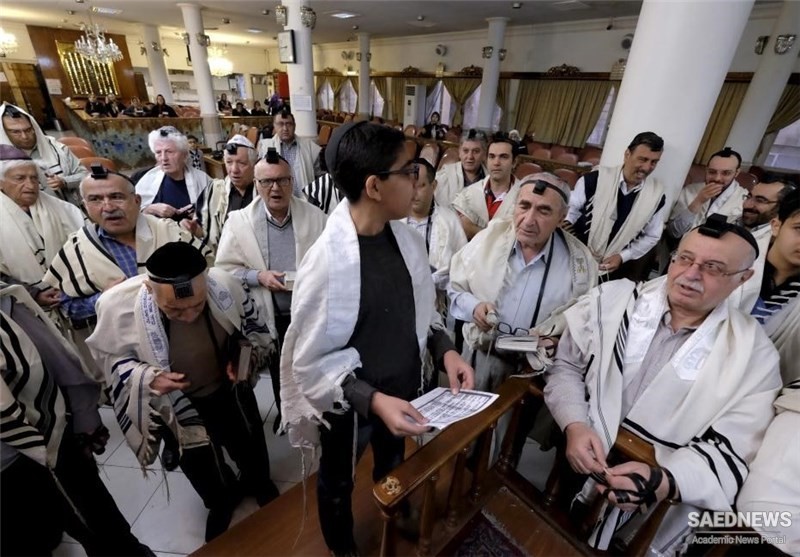Iran had a large Jewish population, probably reaching 100,000 souls. In addition, they had efficient leaders who were able to negotiate their religious status. Farahabad is a very good example of a town where the Jews were able to resist the royal edicts for conversion. In these reports of forced conversions, there are notable details that evince the socio-economic condition of the Jews in Iran. The instance of Farahabad is one of the most revealing and intriguing. We see that on the first occasion in 1619, they outwardly accepted Islam, practising Judaism in secret (as anusim), but the second time in 1656, they felt safe enough to refuse outright the orders of the Grand Vizier to convert to Islam. Eight decades later, in Kashan, the notable figures of the Jewish community ingeniously had the Jews of the town convert to Islam in order to escape from financial extortion and impoverishment, but after a period of seven months the Jews renegotiated the religious status of their community and returned to Judaism again. In all these cases, they were unmolested and were allowed to preserve the Jewish faith. There are two important factors which explain their ability to negotiate and refute Islam. One was the political organisation of Safavid Iran, and the other the economic role played by the Jews.
Under the Safavids, contrary to the Abbasid period, the Jewish leadership was territorially defined. The Iranian Jewry was no longer under the jurisdiction of a Resh Galuta or a Gaon. The local leader was chosen from among respected Jewish personalities, and was usually a rabbi, but occasionally, as Fischel points out, it could have been also a Jewish apostate. This was the case of Hanukka, the leader of the Jews of Zagrum, who were settled in Farahabad. The conversion of the leader could have been used as a strategy for easier negotiation with the Muslim authorities. Secondly, the welfare of the Jews depended on the local Muslim governor, who was able to protect them even when they travelled to another province. There are two examples of this in Babai b. Farhad’s chronicle. During Tahmasp Quli Khan’s occupation of Kashan, the Jews of the town decided to convert in order to escape from heavy taxation. Abraham Yazdi, who was a Jew from Yazd, boldly refused to convert as he was not from Kashan. In another case, such policy worked to the disadvantage of Jews visiting Hamadan, as they could not benefit from the immunity granted to the local Jews during the Ottoman occupation. Thus, as can be observed from the sources, the local governors had the power to free the Jews from restrictions imposed by the court.
The tolerance of the local rulers was not the only factor that determined the condition of the Jews. The Jews’ impact on the local economy was another important element which regulated their relation with the Muslim authorities. Again, Farahabad is a very good example of a town where the Jews’ financial strength enabled them to earn and benefit from the respect of their Muslim neighbours. Babai b. Lutf tells us that Shah Abbas I built Farahabad for the Jews on the Caspian coast, just as the Shah had built New Julfa for the Armenians.583 Despite Moreen’s protest, Babai b. Lutf’s assertions are very plausible. The Shah may not have built an entire town for them, but could have certainly erected a special quarter for the Georgian Jews, like New Julfa, which was also just a neighbourhood of Isfahan. Moreover, the lenient way in which the Jews of Farahabad were treated during both periods of crisis, in 1619 and 1656, substantiates the fact that they had a position similar to that of the Armenians of Julfa and likewise were valued by the Muslim rulers for the capital they generated. Arakel of Tabriz asserts that they were rich and opulent and were involved in the trade in textiles and silver. The Muslim author, Iskandar Beg Munshi, conveys to us that at least numerically the non-Muslim population of the town was as important as the Muslim population.
As the Caspian coast was an important centre of silk production, it is not surprising that the Jews of Farahabad were involved in the silk trade. Dutch sources and the Afzal al-Tawarikh mention powerful Jews who led the silk trade in 1619 and 1632. Their contact with Jews in the Ottoman Empire enabled them to export silk beyond the borders of Iran. The thousand Jewish families of Farahabad had been given exclusive rights over the silk production and trade in the province of Gilan. We are told that Khwaja Balazar (or Lalazar) Yahud was appointed as their delegate. Elsewhere in Iran they were also implicated in this business, and the Jews of Farahabad could have well been their primary suppliers. Olearius testifies that the Jews had silk girdles in Lar, and so does Father Schillinger, who asserts that the silk manufacture of Lar was mostly run by them. Tavernier confirms this and adds that they were also involved in the wool industry and produced very refined belts. Indeed, Lar was a prosperous town and there have been more reports on the mercantile activities of the Jews of this town than anywhere else in Iran. Lar was on the crossroads between the Ottoman Empire and the trading posts of the Persian Gulf. Therefore, it was well situated for commercial traffic. Giosafat Barbaro related already in 1472-1473 that Lar was a trade centre, with fertile agricultural soil. Lar definitely had an important Jewish community. In fact, according to Tavernier, Lar was mainly a Jewish town. Many other travellers referred to the Jews of Lar, such as Antonio Tenreiro (who was himself of Jewish descent and visited the area in 1560), John Newbury (cir. 1579), and Thomas Herbert (cir. 1628).


 Shia Sunni Conflicts under Safavids
Shia Sunni Conflicts under Safavids














































